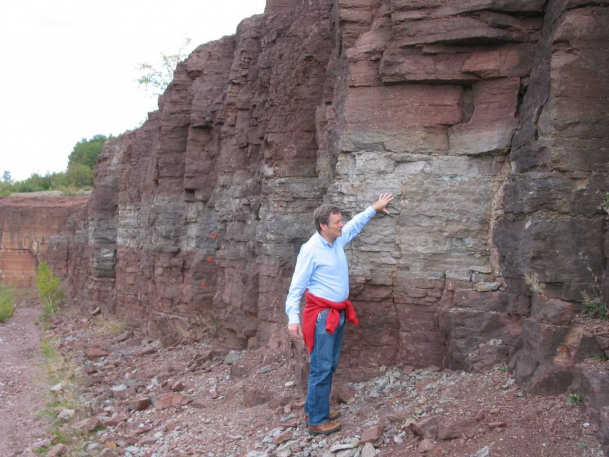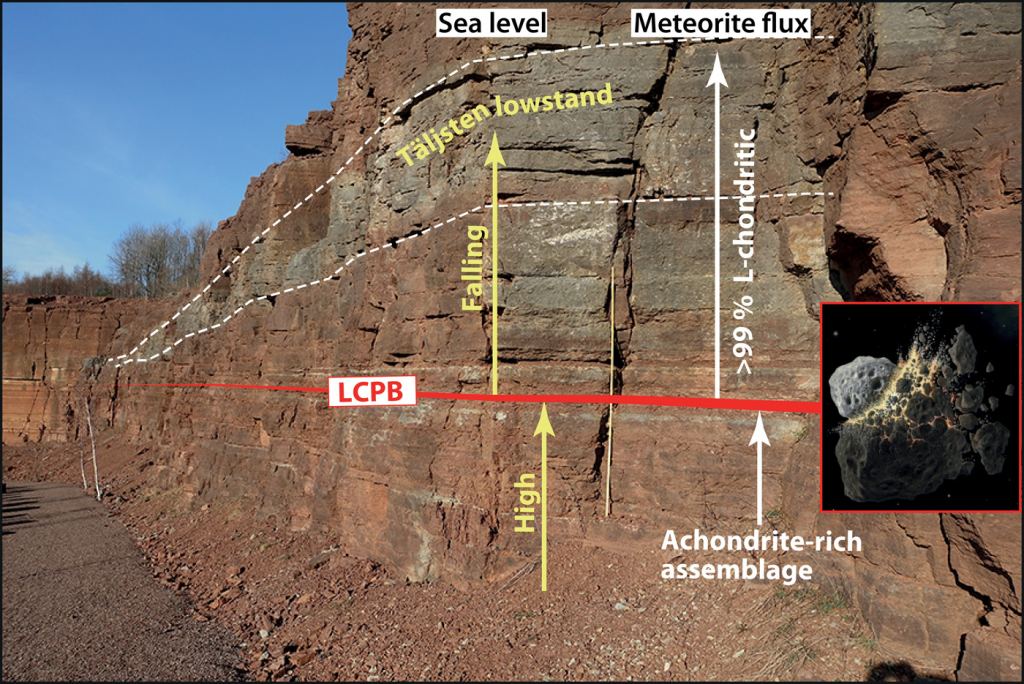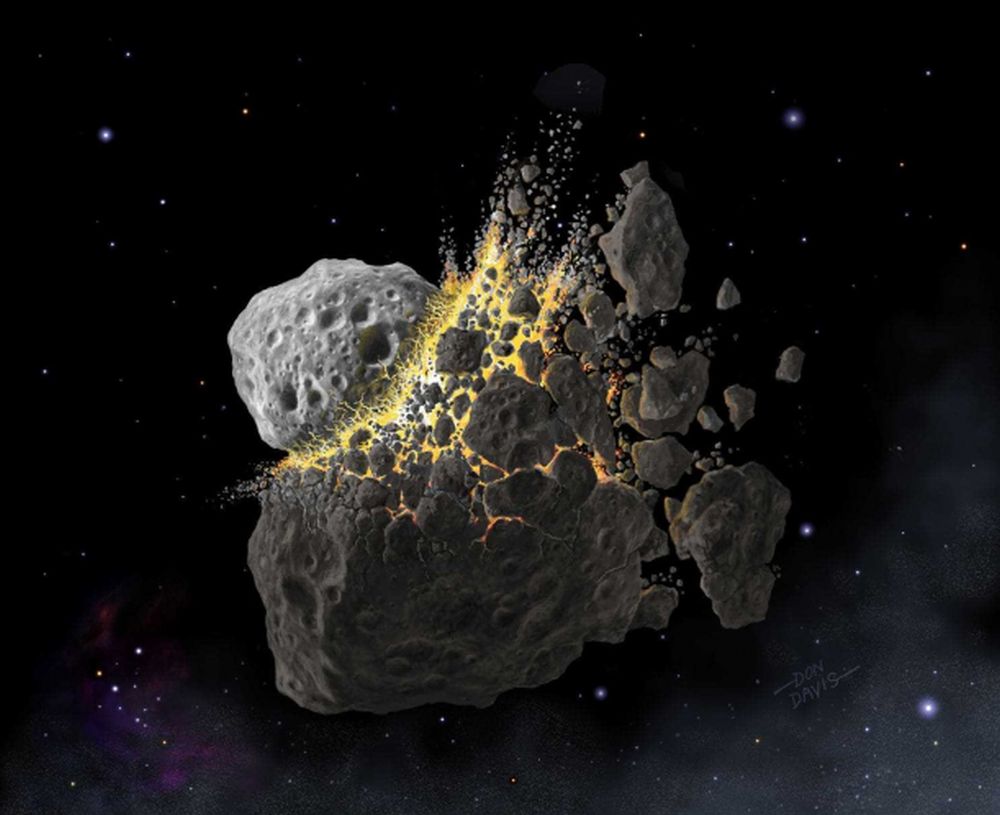About 466 million years ago, there was an asteroid collision in the asteroid belt between Mars and Jupiter. The collision caused the breakup of a major asteroid, creating a shower of dust throughout the inner Solar System. That event is called the Ordovician Meteor Event, and its dust caused an ice age here on Earth.
That ice age contributed to an enormous boost in biodiversity on ancient Earth.
In recent decades, scientists have uncovered evidence showing how different events in space shaped life on Earth. The most well-known of these is the Chicxulub impact that brought the reign of the dinosaurs to an end some 66 million years ago. But there have been other events in space that affected life on Earth, including a supernova that exploded about 2.6 million years ago that may have wiped out large ocean animals, and another supernova that exploded about 41,000 years ago and that may have helped wipe out the mammoths.
But in this case, the asteroid-dust ice age may have helped life on Earth rather than hindered it.
Scientists have known about the Ordovician Meteor Event (OME) for some time now. They know it was an L-chondrite asteroid because they can see its dusty residue in Earth’s stratified layers. In fact, the breakup of that 150 km. diameter ancient asteroid 467 million years ago still delivers almost a third of all the meteorites that strike Earth. That event was no trivial matter; it’s the largest asteroid breakup that we know of in the last 3 billion years.
Something else happened on Earth about 466 million years ago: the mid-Ordovician Ice Age. The climate was homogeneous before that, the same from pole to pole. But when the ice age came, the seas froze at the poles and the equatorial regions were much warmer than the polar regions. The different climatic regions spurred greater evolution of species, bringing about a boom in biodiversity.
But linking the Ordovician Meteor Event to the mid-Ordovician ice age has been controversial.
“Our results show for the first time that such dust, at times, has cooled Earth dramatically.”
Birger Schmitz, Lead Author, Lund University.
According to a new study titled “An extraterrestrial trigger for the mid-Ordovician ice age: Dust from the breakup of the L-chondrite parent body” the causal link between the OME and the ice age is now much stronger. The study was published in the journal Science Advances.
The authors of the study come from a variety of institutions around the world, including Lund University in Sweden. Their work focuses on sea-floor sediment data that came from the time of the Ordovician Meteor Event. The authors say that after the OME, there was an increase of three to four orders of magnitude in fine-grained material falling to Earth.

The amount of material falling to Earth had to have matched the amount blanketing the inner Solar System. “Extraordinary amounts of dust in the entire inner solar system during >2 Ma following the L-chondrite breakup cooled Earth and triggered Ordovician icehouse conditions, sea level fall, and major faunal turnovers related to the Great Ordovician Biodiversification Event,” the paper says.
“Normally, Earth gains about 40,000 tons of extraterrestrial material every year,” says Philipp Heck, a curator at the Field Museum, associate professor at the University of Chicago, and one of the paper’s authors. “Imagine multiplying that by a factor of a thousand or ten thousand.”
“Our hypothesis is that the large amounts of extraterrestrial dust over a time-frame of at least two million years played an important role in changing the climate on Earth, contributing to cooling,” says Heck.
“Our results show for the first time that such dust, at times, has cooled Earth dramatically,” says Birger Schmitz of Sweden’s Lund University, the study’s lead author and a research associate at the Field Museum. “Our studies can give a more detailed, empirical-based understanding of how this works, and this in turn can be used to evaluate if model simulations are realistic.”
The scientists focused on 466 million year old sedimentary sea rocks from the same time as the OME. They looked for traces of space dust, then compared it to tiny micrometeorites from Antarctica for comparison. “We studied extraterrestrial matter, meteorites and micrometeorites, in the sedimentary record of Earth, meaning rocks that were once sea floor,” says Heck. “And then we extracted the extraterrestrial matter to discover what it was and where it came from.”

They used acid to eat away the rock, leaving only the space dust behind. Then they analyzed the chemical makeup of the dust. They looked for evidence of extraterrestrial origin in the form of He3, an isotope of helium that comes from the Sun but is absent on Earth. Finding these isotopes and other rare minerals that come from space, like chromites, prove the dust is extraterrestrial in origin.
The authors of this study are the first to show that the mid-Ordovician ice age is linked to the Ordovician Meteor Event. “The timing appears to be perfect,” he says. The dust from the OME would have blocked out sunlight, triggering global cooling and the ice age.
But this ice age wasn’t catastrophic for life on Earth. Quite the opposite. All this dust settle to Earth over a two million year period, meaning the cooling was gradual, not catastrophic. As a result, life had a chance to adapt. That adaptation led to a boom in new life forms, as species adapted to new climate conditions. That boom is called the Great Ordovician Biodiversification Event (GOBE.)
Heck is quick to caution people against drawing false conclusions. Just because this type of climate change led to greater biodiversity, it doesn’t mean we can take climate change lightly.
“In the global cooling we studied, we’re talking about timescales of millions of years,” said Heck. “It’s very different from the climate change caused by the meteorite 65 million years ago that killed the dinosaurs, and it’s different from the global warming today–this global cooling was a gentle nudge. There was less stress.”
If this gradual cooling sounds like a solution we could implement to limit global climate change, Heck throws cold water on that idea, too. “Geoengineering proposals should be evaluated very critically and very carefully, because if something goes wrong, things could become worse than before.”

